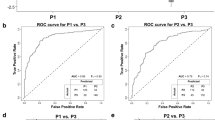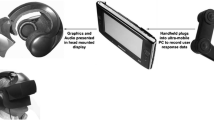Abstract
Purpose of Review
This paper examines the theoretical and empirical basis for neurocognitive phenotyping of HIV.
Recent Findings
The pattern of neurocognitive symptoms associated with HIV has traditionally been referred to as a “subcortical” phenotype. Recent concern has been raised that the neurocognitive phenotype in the post-ART era has changed to reflect the addition of cortical features, suggestive of synergistic age-related neurodegeneration. Empirical evidence reviewed in this paper suggests that, when present, HIV-related neurocognitive impairment in the post-ART era remains subcortical in nature, regardless of advanced age or treatment status. Persistent neurocognitive impairment among virally suppressed individuals may reflect a combination of HIV disease factors, pre-existing risk factors, and/or emergent health comorbidities such as subcortical ischemic vascular disease in older people living with HIV.
Summary
An entrenchment of the subcortical neurocognitive phenotype of HIV appears to be unfolding in the post-ART era. Whether new neurocognitive subtypes of HIV exist in the current era requires additional research utilizing harmonized test protocols and advanced computational methods capable of deep phenotyping. Recommendations from other neurological disorders are provided.

Similar content being viewed by others
References
Papers of particular interest, published recently, have been highlighted as: • Of importance
Heaton RK, Clifford DB, Franklin DR, Woods SP, Ake C, Vaida F, et al. HIV-associated neurocognitive disorders persist in the era of potent antiretroviral therapy CHARTER study. Neurol. 2010;75(23):2087–96.
Clifford DB, Ances BM. HIV-associated neurocognitive disorder. Lancet Infect Dis. 2013;13(11):976–86.
Antinori A, Arendt G, Becker JT, Brew BJ, Byrd DA, Cherner M, et al. Updated research nosology for HIV-associated neurocognitive disorders. Neurology. 2007;69(18):1789–99.
Valcour V, Sithinamsuwan P, Letendre S, Ances B. Pathogenesis of HIV in the central nervous system. Current HIV/AIDS Reports. 2011;8(1):54–61.5.
Grant I, Franklin DR, Deutsch R, Woods SP, Vaida F, Ellis RJ, et al. Asymptomatic HIV-associated neurocognitive impairment increases risk for symptomatic decline. Neurol. 2014;82(23):2055–62.
Saylor D, Dickens AM, Sacktor N, Haughey N, Slusher B, Pletnikov M, et al. HIV-associated neurocognitive disorder—pathogenesis and prospects for treatment. Nat Rev Neurol. 2016;12(4):234.
Sacktor N, Nakasujja N, Skolasky R, Robertson K, Wong M, Musisi S, et al. Antiretroviral therapy improves cognitive impairment in HIV+ individuals in sub-Saharan Africa. Neurology. 2006;67(2):311–4.
Cardenas VA, Meyerhoff DJ, Studholme C, Kornak J, Rothlind J, Lampiris H, et al. Evidence for ongoing brain injury in human immunodeficiency virus–positive patients treated with antiretroviral therapy. J Neuro-Oncol. 2009;15(4):324–33.
Cohen RA, Harezlak J, Schifitto G, Hana G, Clark U, Gongvatana A, et al. Effects of nadir CD4 count and duration of human immunodeficiency virus infection on brain volumes in the highly active antiretroviral therapy era. J Neuro-Oncol. 2010;16(1):25–32.
• Sanford R, Ances BM, Meyerhoff DJ, Price RW, Fuchs D, Zetterberg H, et al. Longitudinal trajectories of brain volume and cortical thickness in treated and untreated primary human immunodeficiency virus infection. Clin Infect Dis. 2018;67(11):1697–704. Initiation of ART in early infection did not reverse existing brain abnormalities but provided protection against progressive brain injury for a short period of time. Additional studies are needed to determine the durability of these findings.
Kallianpur KJ, Colby D, Jahanshad N, Fletcher JK, Ananworanich J, Clifford K, Benjapornpong K, Adams C, Spudich S, Valcour V for the RV254/S010 protocol teams. Brain volumetric changes after two years of ART initiated during acute HIV Infection. 23rd Conference on Retroviruses and Opportunistic Infections, February 22–25, 2016, Boston (Poster).
Sacktor N, Robertson K. Evolving clinical phenotypes in HIV-associated neurocognitive disorders. Current HIV/ AIDS Reports. 2014;9(6):517.
• Sacktor N. Changing clinical phenotypes of HIV-associated neurocognitive disorders. J Neuro-Oncol. 2017;27:1–5. Treatment with ART has decreased the severity of HAND, but symptoms persist with evidence of cortical and subcortical features. Vascular mechanisms and other comorbidities likely contribute to the expression of symptoms in treatment-experienced individuals.
Navia BA, Jordan BD, Price RW. The AIDS dementia complex: I. Clinical features. Ann Neurol. 1986;19(6):517–24.
Paul RH, Ernst T, Brickman AM, Yiannoutsos CT, Tate DF, Cohen RA, et al. Relative sensitivity of magnetic resonance spectroscopy and quantitative magnetic resonance imaging to cognitive function among nondemented individuals infected with HIV. JINS. 2008;14(5):725–33.
Heaton RK, Franklin DR, Ellis RJ, McCutchan JA, Letendre SL, LeBlanc S, et al. HIV-associated neurocognitive disorders before and during the era of combination antiretroviral therapy: differences in rates, nature, and predictors. J Neurvirol. 2011;17(1):3–16.
Woods SP, Iudicello JE, Moran LM, Carey CL, Dawson MS, Grant I. HIV-associated prospective memory impairment increases risk of dependence in everyday functioning. Neuropsychol. 2008;22(1):110.
Archibald SL, Masliah E, Fennema-Notestine C, Marcotte TD, Ellis RJ, McCutchan JA, et al. Correlation of in vivo neuroimaging abnormalities with postmortem human immunodeficiency virus encephalitis and dendritic loss. Arch Neurol. 2004;61(3):369–76.
Becker JT, Sanders J, Madsen SK, Ragin A, Kingsley L, Maruca V, et al. Subcortical brain atrophy persists even in HAART-regulated HIV disease. Brain Imaging Behav. 2011;5(2):77–85.
Paul R, Cohen R, Navia B, Tashima K. Relationships between cognition and structural neuroimaging findings in adults with human immunodeficiency virus type-1. Neurosci Biobehav Rev. 2002;26(3):353–9.
Wright PW, Vaida FF, Fernández RJ, Rutlin J, Price RW, Lee E, et al. Cerebral white matter integrity during primary HIV infection. AIDS (London, England). 2015;29(4):433.
Paul RH, Yiannoutsos CT, Miller EN, Chang L, Marra CM, Schifitto G, et al. Proton MRS and neuropsychological correlates in AIDS dementia complex: evidence of subcortical specificity. J Neuropsych Clin Neurosci. 2007;19(3):283–92.
Thompson PM, Dutton RA, Hayashi KM, Toga AW, Lopez OL, Aizenstein HJ, et al. Thinning of the cerebral cortex visualized in HIV/AIDS reflects CD4+ T lymphocyte decline. PNAS. 2005;102(43):15647–52.
Baker LM, Cooley SA, Cabeen RP, Laidlaw DH, Joska JA, Hoare J, et al. Topological organization of whole-brain white matter in HIV infection. Brain Connectivity. 2017;7(2):115–22.
Cysique LA, Maruff P, Brew BJ. Prevalence and pattern of neuropsychological impairment in human immunodeficiency virus-infected/acquired immunodeficiency syndrome (HIV/AIDS) patients across pre-and post-highly active antiretroviral therapy eras: a combined study of two cohorts. J Neuro-Oncol. 2004;10(6):350–7.
Solomon IH, De Girolami U, Chettimada S, Misra V, Singer EJ, Gabuzda D. Brain and liver pathology, amyloid deposition, and interferon responses among older HIV-positive patients in the late HAART era. BMC Infect Dis. 2017;17(1):151.
van Gorp WG, Hinkin C, Satz P, Miller EN, Weisman J, Holston S, et al. Subtypes of HIV-related neuropsychological functioning: a cluster analysis approach. Neuropsychol. 1993;7(1):62.
Fazeli PL, Crowe M, Ross LA, Wadley V, Ball K, Vance DE. Cognitive functioning in adults aging with HIV: a cross-sectional analysis of cognitive subtypes and influential factors. J Clin Res HIV AIDS Prev. 2014;1(4):155.
Lojek E, Bornstein RA. The stability of neurocognitive patterns in HIV infected men: classification considerations. J Clin Exp Neuropsychol. 2005;27(6):665–82.
Dawes S, Suarez P, Casey CY, Cherner M, Marcotte TD, Letendre S, et al. Variable patterns of neuropsychological performance in HIV-1 infection. J Clin Exp Neuropsychol. 2008;30(6):613–26.
Molsberry SA, Cheng Y, Kingsley L, Jacobson L, Levine AJ, Martin E, et al. Neuropsychological phenotypes among men with and without HIV disease in the multicenter AIDS cohort study. AIDS. 2018;32(12):1679–88.
Hachinski V, Iadecola C, Petersen RC, Breteler MM, Nyenhuis DL, Black SE, et al. National Institute of Neurological Disorders and Stroke–Canadian stroke network vascular cognitive impairment harmonization standards. Stroke. 2006;37(9):2220–41.
Burdo TH, Weiffenbach A, Woods SP, Letendre S, Ellis RJ, Williams KC. Elevated sCD163 in plasma but not cerebrospinal fluid is a marker of neurocognitive impairment in HIV infection. AIDS (London, England). 2013;27(9):1387–95.
D’Antoni ML, Byron MM, Chan P, Sailasuta N, Sacdalan C, Sithinamsuwan P, et al. Normalization of soluble CD163 after institution of antiretroviral therapy during acute HIV infection tracks with fewer neurological abnormalities. JID. 2018;8(9):1453–63.
• Imp BM, Rubin LH, Tien PC, Plankey MW, Golub ET, French AL, et al. Monocyte activation is associated with worse cognitive performance in virologically suppressed HIV-infected women. JID. 2016;27:jiw506. Plasma levels of sCD163 corresponded to overall neurocognitive performance, memory, psychomotor speed, and motor function in females with chronic HIV on suppressive ART. Additionally, plasma levels of sCD164 correlated with performance on tests of executive function in aviremic females on ART. The results demonstrate that ongoing immune activation is associated with brain function in optimally treated individuals.
Ndhlovu LC, Umaki T, Chew GM, Chow DC, Agsalda M, Kallianpur KJ, et al. Treatment intensification with maraviroc (CCR5 antagonist) leads to declines in CD16-expressing monocytes in cART-suppressed chronic HIV-infected subjects and is associated with improvements in neurocognitive test performance: implications for HIV-associated neurocognitive disease (HAND). J Neuro-Oncol. 2014;20(6):571–82.
Ndhlovu LC, D'Antoni ML, Ananworanich J, Byron MM, Chalermchai T, Sithinamsuwan P, et al. Loss of CCR2 expressing non-classical monocytes are associated with cognitive impairment in antiretroviral therapy-naive HIV-infected Thais. J Neuroimmunol. 2015;288:25–33.
Krebs SJ, Slike BM, Sithinamsuwan P, Allen IE, Chalermchai T, Tipsuk S, et al. Sex differences in soluble markers vary before and after the initiation of antiretroviral therapy in chronically HIV infected individuals. AIDS (London, England). 2016;30(10):1533.
Ver Steeg G, Galstyan A. Discovering structure in high-dimensional data through correlation explanation. In Advances in Neural Information Processing Systems 2014. pp. 1004–1012.
Massa MS, Wang N, Bickerton WL, Demeyere N, Riddoch MJ, Humphreys GW. On the importance of cognitive profiling: a graphical modelling analysis of domain-specific and domain-general deficits after stroke. Cortex. 2015;71:190–204.
Li Y, Root JC, Atkinson TM, Ahles TA. Examining the association between patient-reported symptoms of attention and memory dysfunction with objective cognitive performance: a latent regression rasch model approach. Arch Clin Neuropsychol. 2016;31(4):365–77.
Patton DE, Woods SP, Franklin D, Cattie JE, Heaton RK, Collier AC, et al. Relationship of medication management test-revised (MMT-R) performance to neuropsychological functioning and antiretroviral adherence in adults with HIV. AIDS Behav. 2012;16(8):2286–96.
Woods SP, Iudicello JE, Morgan EE, Cameron MV, Doyle KL, Smith TV, et al. HIV neurobehavioral research program (HNRP) group, Grant I, Atkinson JH, Ellis RJ. Health-related everyday functioning in the internet age: HIV-associated neurocognitive disorders disrupt online pharmacy and health chart navigation skills. Arch Clin Neuropsychol. 2016;31(2):176–85.
Author information
Authors and Affiliations
Corresponding author
Ethics declarations
Conflict of Interest
The authors declare that they have no conflicts of interest.
Human and Animal Rights and Informed Consent
This article does not contain any studies with human or animal subjects performed by any of the authors.
Additional information
Publisher’s Note
Springer Nature remains neutral with regard to jurisdictional claims in published maps and institutional affiliations.
This article is part of the Topical Collection on Central Nervous System and Cognition




